Read the First Full Issue of ‘Orc Stain,’ A Gorgeous Comic that Looks Like a Beating Heart

I bought the first issue of James Stokoe's Orc Stain way back in December. I finally read it this weekend. Pathetic, right? I have plenty of excuses, if you'd like to hear them. Stokoe has drawn some stuff that blew my mind, most particularly his Spider-'Nam fan comic, but I just never sat down and read it for whatever reason, even after having bought it. Here's my review: Buy Orc Stain. There are plenty of things to like about Orc Stain, a fantasy tale about an orc with the power to open anything, from the smooth world-building to the immediately interesting characters, but it also just looks better than most comics not just in terms of illustration but also its palette.
And thanks to Image Comics, we have the full first issue of the series for you to read at the end of the post.Let's talk about colors. Specifically, let's talk about colors in mainstream comics, which tend toward realism, rather than expressionism. These colors are meant to represent what the characters or their surroundings would actually look like in real life, rather depicting a mood or tone. There are a few exceptions: I like Bettie Breitweiser's dusty colors on Jeff Parker and Gabriel Hardman's Hulk; Shawn Martinbrough had a remarkable run on Detective Comics almost ten years ago with WildstormFX on colors I believe, and Frazer Irving is the king of "this isn't real life, so let's all just stop pretending" coloring at the moment. But by and large, if you flip open an adventure comic right now? You're looking at colors that are meant to resemble real life, rather than fantasy.
This isn't a bad thing, exactly. It's just a thing that I noticed. I couldn't tell you when I first noticed it. It probably happened after I read a Frazer Irving book, or figured out how Frank D'Armata's colors tend to bury the work of artists, or realized how John Rauch's work on New Mutants and Pete Pantazis's colors on Justice League were washed out and bright, creating skin tones that were awfully light and unbelievable. Whatever the catalyst was, it made me start paying attention to palettes in comics and how they can be used for good, rather than just realism in and of itself.
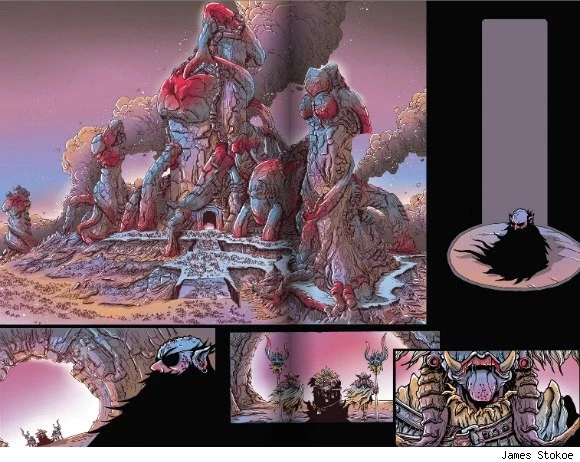
Orc Stain's palette is interesting. If I had to put a word, or words, on it, I'd say that the palette is... sickly and visceral, like a half-healed wound. It's evocative of guts and organs -- no, not organs. It's evocative of guts and hearts. The purples, reds, and blues on the rocks in this spread remind me of a beating heart, and the dominance of the purple and blue puts me in mind of a heart that's straining to beat.
(Also? It reminds me a little of tentacle porn, but that's a harder snap judgment to pin down than off-beat hearts. But look at it and think of the rushing blood of a beating heart, rocky outcroppings with engorged peaks, and the positively veiny striations... it's a little phallic, isn't it, and in a particularly inhuman and unsettling way? So: tentacle porn.)
The colors, and the mood that the colors put into my head, fit the story. The spread above depicts a war scene, and the orcs are described in the text as a blight on the land. When you look at the world of Orc Stain, or at least the world viewed through the lens of this scene that opens the very first chapter of the story, you're looking at a gaping wound. When you look at the Orc Tzar, with his bright red lips and shock of green atop his head, you're looking at poison.
Scene two.
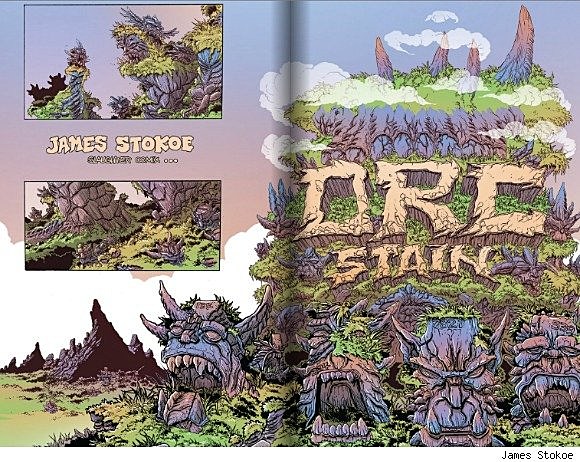
Look at the sky. That's a pale blue fading into... what is that, orangish-brown? The rocks are blue and tan. The clouds are translucent and white. The texture on the rock faces resemble the patterns your fingernails take when you damage them, while the layers are like tree bark or loose skin, which further suggests queasy organic horror.
The orcs themselves are a mixture of blue and purple, brighter than the rocks here, with green highlights. Love nymphs are bright blue, like the sky, and entirely nude. The Love Nymph in the first issue is probably the only smooth thing in the entire book, which is worthy of study in and of itself.
What gets me most on that title spread is the grass. The grass is this bright green, the sort of green that comes from either Photoshop, artificial grass, or a fleet of yard workers pulling a week of overtime. I never saw grass like that growing up, when the sun baked the grass in Georgia to a darker green. The grass was brighter than pine needles, darker than flowers. This color here is snot green, bright and shocking. Well, for us, anyway -- it's natural in Orc Stain. This is what the world looks like. It's a fantasy.
I like looking at Orc Stain, and the palette is a big part of that. It's not trying to show me a vision of real life like Dave Stewart did so well on Conan with Cary Nord. The palette for Conan was rugged and raw, like Conan himself, but was still some measure of realistic. It was Earthbound. There's no reason for Orc Stain's world to look like the Earth, is there? Orc Stain is a monster comic, and it looks like someone took the 1931 Frankenstein and put it through a Technicolor blender. It looks like these kinds of comics should look: distinctive, with a palette that draws you in and keeps you hooked, even before the line art or words have a chance to take hold.
It works, and it works well. I'm a fan.
Notice anything missing? Here's a clue: I've told you very little about what Orc Stain is actually about. All of this post is about one specific aspect of Stokoe's craft. Beyond slight details to reinforce my point, I've said very little about the writing side of Orc Stain. Rest assured, it's just as good as the rest of the book. It's the story of an orc called One-Eye. He can find the weakness in any structure, and while most orcs love to smash things, he's content with opening them. The conflict comes from the Orc Tzar, leader of the orc army that's sweeping across the land like a blight, after a prophecy tells the Tzar that he needs One-Eye in order to maximize his power. One-Eye, as you can see from the pages below, is probably a little bit too easy-going for that. Check out the full first issue below.
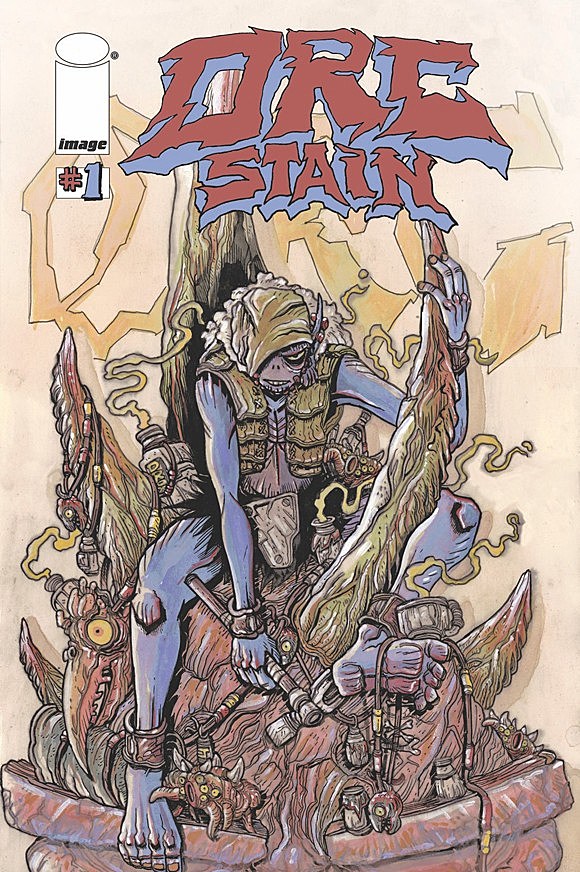






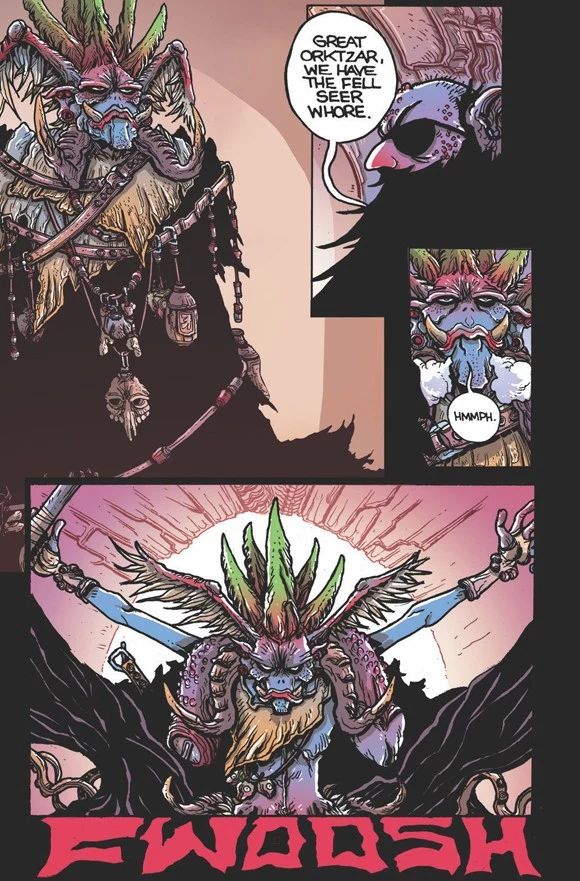















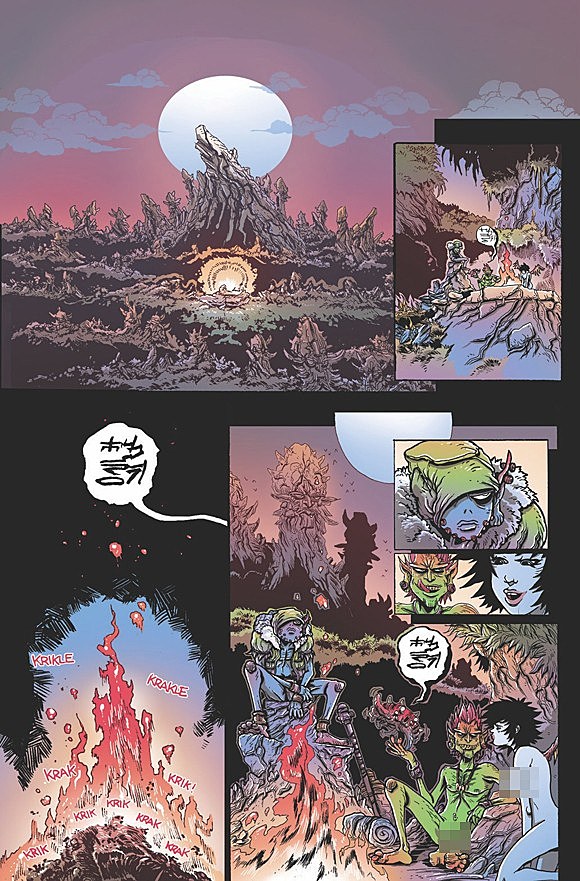



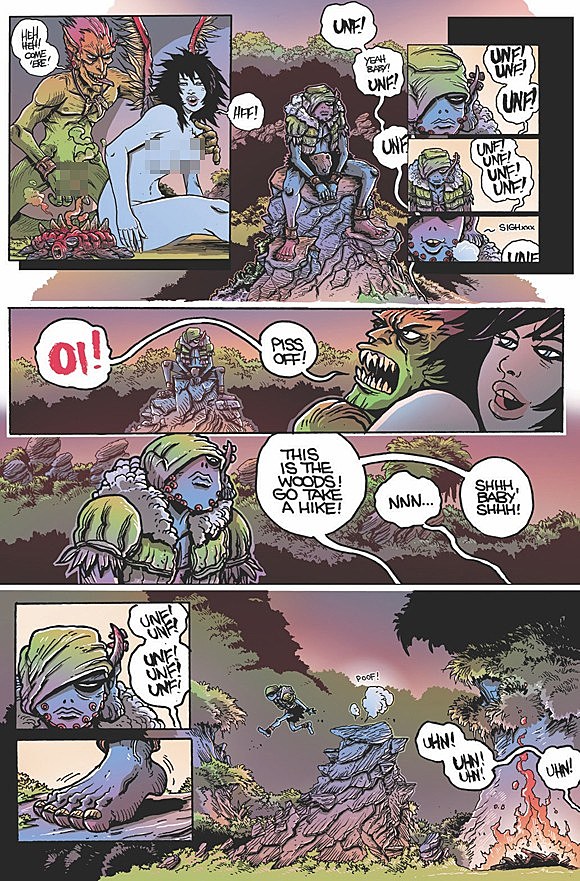







More From ComicsAlliance


![My Favorite Monster: Seeing The God In Godzilla [Fantasy Week]](http://townsquare.media/site/622/files/2016/10/godzilla-feat.jpg?w=980&q=75)





